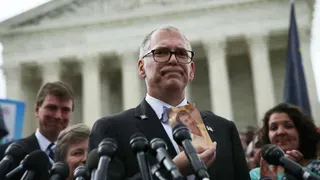September 19, 2015
Aging in America, Part Six: Is Enough Being Done?
William E. Kelly READ TIME: 3 MIN.
The six-article series on Aging in America started in November 2014 and ends with this September's issue. The source of all data and conclusions quoted in the series came from numerous documented and scholarly studies, census data and official government reports spanning more than a decade. To say that this is the tip of the iceberg is a huge understatement of the realities for this situation.
There should be no doubt that America is in the midst of an aging population crisis that needs priority attention. We the people and our government have unfortunately been slow to recognize the severe gravity of demographic, economic, societal and cultural shifts that are unfolding before our eyes.
To fully explore the complex implications of an aging population, or to suggest broad stroke solutions and half measures, was never the intent of the series. The objective has been merely to create greater awareness among the general population, that this crisis presents a real, very serious and grave threat to the well- being of Americans of all ages and walks of life.
Of all the information offered, I leave you with twi extremely important facts to ponder:
1. The fastest growing age group in America today are those aged 85 and over.
2. By 2030, as many as one out of every five will be age 65 or over.
I believe strongly that the questions are not whether there is a growing crisis, or whether there is sufficient talent and financial resources available to address and tame it. Rather, it is whether there is the political will and awareness among the citizens, at an intensity that will influence our government to move in directions, which can prepare for and avert the worst of this oncoming runaway train.
We recently went through a devastating recession that decimated the assets of many seniors, who cannot possibly live long enough to recover. The middle class is rapidly shrinking and retiring in fast-growing numbers. Are we going to continue to play Russian roulette and political football with America's future? I submit that leaving any senior behind is neither an option, nor an impossible thing to avert. It is an imperative task and now is the time to roll up bipartisan sleeves to find solutions from the national level, down to the community and neighborhood levels. Or, are we to become a society that adapts to a "survival of the..." youngest and fittest model?
Much is, in fact, being done by government, the business community and our non-profit organizations. But the socioeconomic variables are diverse and complex, so there is no "one-size-fits-all," easy solution. There is a big push to create more affordable, accessible and age-friendly communities in urban areas across the nation. And some areas have done more than others to address the population shift toward those 65 and greater.
This decade-long student of that age shift has reviewed and shared a summary of consistent, key findings in this series, as found in reams of published, professional research and reports. My belief is that the coming Aging in America catastrophe is preventable, if viewed with a sense of urgency. If not, a disaster of proportions not seen since the Great Depression or the Dust Bowl is likely.
Melodramatic? Exaggerated? Let us hope the future proves me wrong. To those who believe it is government's responsibility and its problem, I would remind you that you are the government, or at least the lifeline to the caretakers you elect/hire to govern you. Are you ready to abdicate your responsibility and trust them to get it right without your vigilance and urging?






